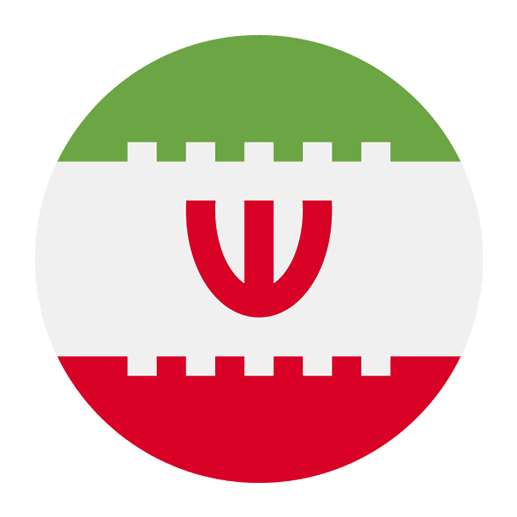Learning a new language is always an exciting journey, and Persian, also known as Farsi, offers a rich cultural and historical tapestry that makes the effort particularly rewarding. However, diving into a new language requires a well-structured study plan to ensure consistent progress and retainment of knowledge. Here’s a comprehensive guide to developing an effective Persian study plan that will help you master this beautiful language.
Setting Clear Goals
Before you begin your Persian language journey, it is essential to set clear, achievable goals. Determine why you want to learn Persian. Is it for travel, work, or personal enrichment? Knowing your purpose will help tailor your study plan to meet your specific needs.
Short-term Goals:
– Learn the Persian alphabet within two weeks.
– Master common greetings and basic phrases in the first month.
– Hold a simple conversation about everyday topics by the end of three months.
Long-term Goals:
– Be able to read and understand simple Persian texts within six months.
– Achieve conversational fluency in one year.
– Be able to write short essays or letters in Persian within eighteen months.
Creating a Study Schedule
Consistency is key when learning a new language. Set aside dedicated time each day for your Persian studies. A well-balanced schedule might include:
– **Daily Practice (30-60 minutes):** Focus on vocabulary, grammar, and listening exercises.
– **Weekly Immersion (2-3 hours):** Engage in activities like watching Persian movies, listening to Persian music, or conversing with native speakers.
– **Monthly Review:** Assess your progress, review what you’ve learned, and adjust your study plan if necessary.
Learning the Alphabet and Pronunciation
The Persian script is derived from the Arabic script but has four additional letters. Learning the Persian alphabet is the foundation of your language study and should be your first priority.
Steps to Learning the Alphabet:
1. **Study the Letters:** Begin with the 32 letters in the Persian alphabet. Use flashcards to help memorize their shapes and sounds.
2. **Practice Writing:** Write each letter repeatedly until you feel comfortable. Pay attention to how letters change shape depending on their position in a word.
3. **Pronunciation Practice:** Use online resources or language apps to listen to native speakers pronouncing each letter. Mimic their pronunciation and record yourself to compare.
Building Vocabulary
A robust vocabulary is essential for effective communication. Start with high-frequency words and phrases that you are likely to use in everyday conversations.
Strategies for Building Vocabulary:
– **Flashcards:** Use physical or digital flashcards to memorize new words. Apps like Anki or Quizlet can be particularly useful.
– **Thematic Lists:** Group vocabulary by themes, such as food, travel, or family, to make it easier to remember.
– **Labeling:** Label objects around your home with their Persian names to immerse yourself in the language.
– **Word of the Day:** Learn a new word every day and try to use it in a sentence.
Mastering Grammar
Persian grammar is relatively straightforward compared to some other languages, but it still requires dedicated study.
Key Grammar Points to Focus On:
– **Sentence Structure:** Persian follows a Subject-Object-Verb (SOV) order.
– **Verb Conjugation:** Learn the present, past, and future tenses, as well as imperative and subjunctive moods.
– **Prepositions and Particles:** Understand the use of common prepositions and particles that affect the meaning of sentences.
– **Pronouns and Possessives:** Get comfortable with personal pronouns and possessive forms.
Developing Listening and Speaking Skills
Listening and speaking are critical components of language learning. Engage with native speakers as much as possible to improve these skills.
Listening Practice:
– **Podcasts and Audiobooks:** Listen to Persian podcasts or audiobooks to familiarize yourself with the natural flow of the language.
– **Movies and TV Shows:** Watch Persian films and TV shows with subtitles to improve your listening comprehension.
– **Music:** Listen to Persian songs and try to understand the lyrics. Singing along can also improve your pronunciation.
Speaking Practice:
– **Language Exchange:** Find a language exchange partner who is a native Persian speaker. Websites like Tandem or HelloTalk can connect you with language partners.
– **Online Tutors:** Consider hiring an online tutor for regular speaking practice. Platforms like iTalki offer access to qualified Persian tutors.
– **Self-Talk:** Practice speaking to yourself in Persian. Describe your day, your surroundings, or narrate a story.
Reading and Writing Skills
Reading and writing in Persian will not only improve your language skills but also deepen your understanding of Persian culture and literature.
Reading Practice:
– **Beginner Books:** Start with books written for Persian language learners or children’s books.
– **Newspapers and Magazines:** Gradually transition to reading Persian newspapers and magazines to build your vocabulary and comprehension.
– **Literature:** Read Persian poetry and classic literature to appreciate the beauty of the language.
Writing Practice:
– **Journaling:** Keep a journal in Persian. Start with simple sentences and gradually increase complexity.
– **Correspondence:** Write letters or emails in Persian. If possible, find a pen pal to correspond with.
– **Creative Writing:** Try writing short stories or essays in Persian to practice using new vocabulary and grammar structures.
Utilizing Language Learning Resources
There are numerous resources available to aid your Persian language studies. Here are some recommendations:
Textbooks and Workbooks:
– **“Teach Yourself: Complete Persian”** by Narguess Farzad
– **“Easy Persian Grammar”** by Ashraf Chaharom
Online Courses and Apps:
– **Rosetta Stone:** Offers a comprehensive Persian course.
– **Duolingo:** A free app for beginner Persian learners.
– **Memrise:** Provides vocabulary and grammar exercises.
Dictionaries and Reference Books:
– **“The Combined New Persian-English and English-Persian Dictionary”** by Abbas Aryanpur Kashani
– **“Persian Grammar: For Reference and Revision”** by John Mace
Immersing Yourself in the Language
Immersion is one of the most effective ways to learn a language. Surround yourself with Persian as much as possible.
Immersion Strategies:
– **Travel:** If possible, travel to a Persian-speaking country such as Iran, Afghanistan, or Tajikistan.
– **Cultural Events:** Attend Persian cultural events, festivals, or community gatherings.
– **Social Media:** Follow Persian-speaking influencers, join Persian language groups, and participate in online forums.
Tracking Your Progress
Regularly assess your progress to stay motivated and on track. Here’s how you can monitor your growth:
– **Language Proficiency Tests:** Take standardized tests like the Persian Language Proficiency Test (PLPT) to gauge your skills.
– **Self-Assessment:** Keep a language learning journal to document what you’ve learned and areas that need improvement.
– **Feedback:** Seek feedback from native speakers or your language tutor to identify strengths and weaknesses.
Staying Motivated
Language learning is a marathon, not a sprint. Staying motivated throughout the journey is crucial.
Tips for Staying Motivated:
– **Set Milestones:** Celebrate small achievements along the way.
– **Join a Community:** Engage with fellow Persian learners for support and encouragement.
– **Stay Curious:** Keep exploring Persian culture, history, and literature to maintain your interest.
– **Reward Yourself:** Treat yourself when you reach your language learning goals.
In conclusion, developing an effective Persian study plan involves setting clear goals, creating a consistent study schedule, and utilizing a variety of resources and strategies to build your skills. Immerse yourself in the language as much as possible, track your progress, and stay motivated. With dedication and perseverance, you’ll find yourself mastering Persian and opening up a new world of cultural and linguistic opportunities. Happy learning!

